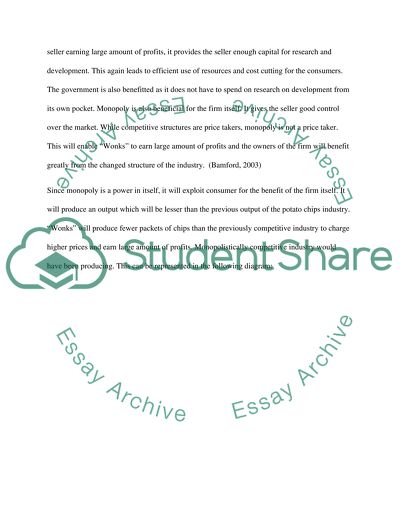Wonks: Monopolistically Competitive Market to Monopoly Research Paper. Retrieved from https://studentshare.org/macro-microeconomics/1431260-wonks-monopolistically-competitive-market-to
Wonks: Monopolistically Competitive Market to Monopoly Research Paper. https://studentshare.org/macro-microeconomics/1431260-wonks-monopolistically-competitive-market-to.


